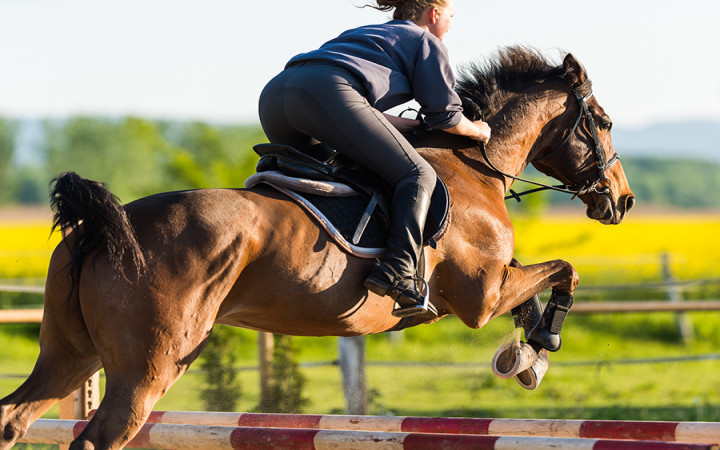Today’s Wonder of the Day was inspired by Sarah. Sarah Wonders, “Who invented horse jumping?” Thanks for WONDERing with us, Sarah!
Have you ever watched the Kentucky Derby? Also known as "The Run for the Roses" and "The Fastest Two Minutes in Sports," this exciting horse race attracts millions of viewers each year. There's nothing quite like watching those muscled thoroughbreds sprint from the starting gate to the finish line.
Speed races aren't the only competitions horse enthusiasts enjoy, though. If you've ever watched any of the equestrian events during the Olympics, you know there are more things that horses can do than simply run at breakneck speeds. Today, we'll take a closer look at one of those events: horse jumping.
Also known as show jumping, stadium jumping, open jumping, or simply jumping, horse jumping is a sport that has been around for quite a while. For example, an early version of horse jumping was featured at the 1900 Olympic Games. After a few years' absence, the modern version of horse jumping appeared again at the 1912 Olympic Games and has been a fixture ever since.
The roots of horse jumping go back much farther, though. In fact, we have to go back in time to fox hunters on horseback who once roamed the English countryside in search of their prey. Hunters were used to traipsing over miles and miles of open, common land.
That changed in the 18th century, however, when Parliament enacted a series of Enclosure Laws. These laws converted common lands to private property and required that the newly-created parcels be enclosed by fences.
As a result of the Enclosure Laws, fox hunting became much more competitive. To pursue foxes in the wild, hunters had to train horses to jump over fences or risk losing their prey. Over time, horse jumping itself became a popular pastime unrelated to hunting.
Today, show jumping involves a rider directing a horse through a series of obstacles on a timed course. Obstacles vary in both height and width.
The goal is to negotiate the obstacle course as quickly as possible without hitting an obstacle or refusing to jump any obstacle. Courses are designed to test both a horse's athleticism and the precision and accuracy of the partnership between the horse and rider.
Modern horse jumping competitions include horses and ponies in all sorts of different sizes and breeds. Likewise, riders from virtually every level, from beginners to professionals, take part.
One thing modern horse jumpers have in common is a riding position known as "forward seat." Early riders would often lean back and pull on the reins when jumping. This method turned out to be uncomfortable for both the horse and the rider.
Italian rider Federico Caprilli, sometimes known as the "father of modern riding," changed all that when he developed the "forward seat" position that's now used universally. In this position, riders lean forward instead as they begin a jump, conforming their posture to their horse's movements during the jump.





